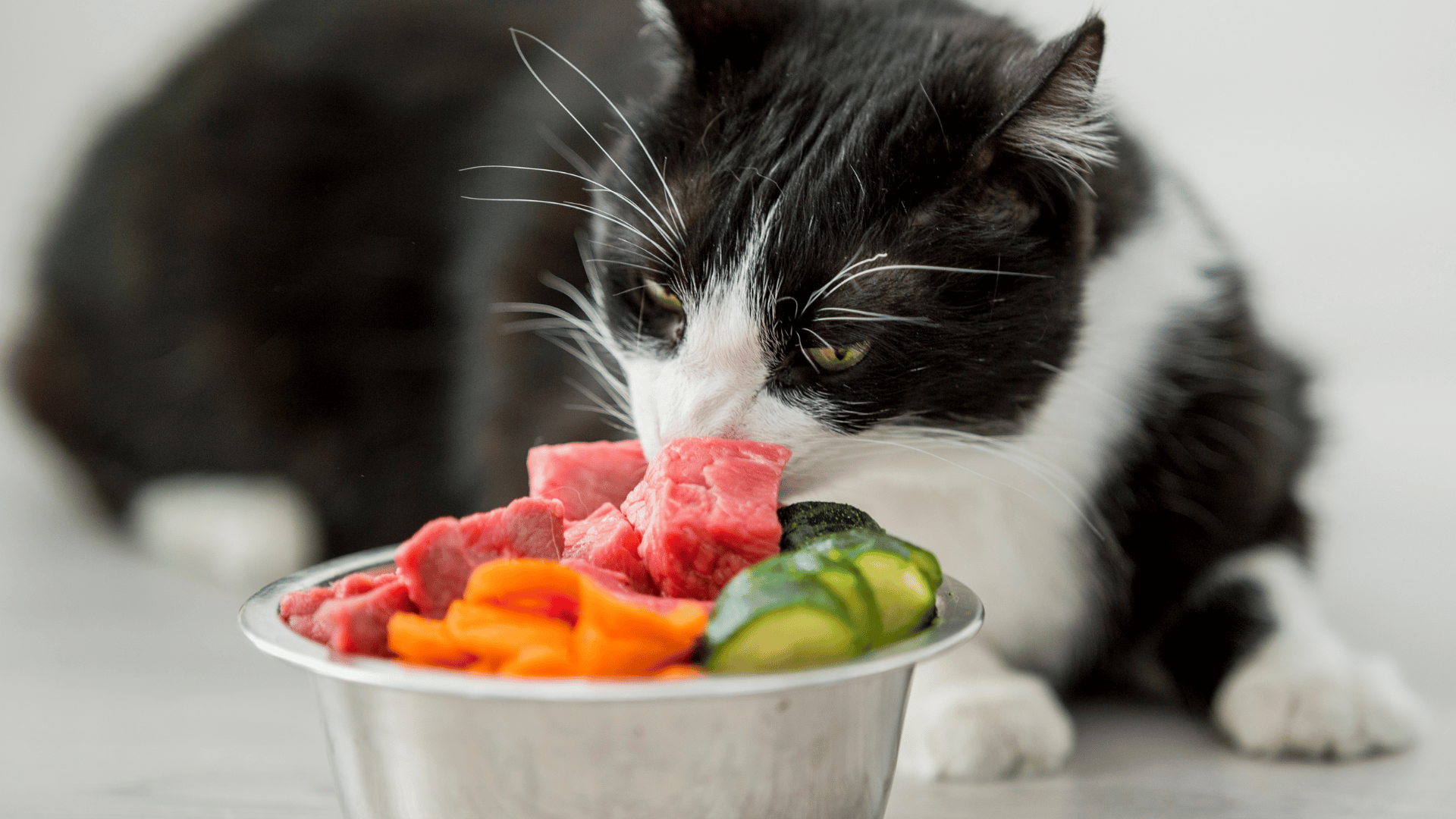The Best Homemade Cat Food
Your cat’s the star of your home—those sneaky paws, that sassy tail flick, they’ve got you wrapped around their little claw. So why not treat them to The Best Homemade Cat Food? Forget the same-old kibble; crafting The Best Homemade Cat Food lets you serve up fresh, healthy meals that make your kitty’s heart (and tummy) sing. In 2025, cat lovers are all about cooking for their pets, and it’s no wonder—homemade means you pick the ingredients, skip the junk, and tailor every bite to your cat’s needs. This guide’s packed with everything you need to know: why homemade’s awesome, what nutrients cats gotta have, and three killer recipes that’ll have your feline begging for seconds. Let’s get cooking and make your cat’s meals the talk of the litter box!
Why Cook for Your Cat?
Store-bought cat food’s convenient, sure, but it’s like eating fast food every day—okay, but not amazing. Homemade cat food lets you go gourmet, giving your cat fresh, high-quality ingredients that boost their health. It’s perfect for picky eaters or cats with sensitive stomachs. But here’s the thing: cats aren’t mini humans. They’re meat-craving carnivores, and their diet’s gotta be spot-on to keep them purring.
The Upside of Homemade
Homemade meals can mean a shinier coat, better digestion, and more energy for those midnight sprints. Places like Cornell University’s Feline Health Center say a balanced, meat-heavy diet supports a cat’s long-term health, maybe even adding years to their life. If your cat’s got allergies, you can ditch ingredients like wheat that make them scratch. Plus, it’s fun—watching your cat gobble up your cooking’s a serious win.
The Risk of Getting It Wrong
Cats need specific stuff in their food, like taurine and calcium. Skimp on these, and you’re looking at trouble—think heart problems or brittle bones. That’s why we’re gonna break down the must-haves and give you recipes that nail the balance, so you can cook with confidence.
What Goes Into a Cat’s Diet
Cats are all about meat, and their bodies are wired for it. They need protein, fats, and just a hint of carbs, plus key nutrients to stay healthy. Here’s the scoop on what makes a cat’s meal complete.
Protein’s the Boss
Your cat’s diet should be 50-60% protein from meat like chicken, turkey, or fish. Protein keeps their muscles lean and their immune system ready to fight. VCA Animal Hospitals points out that cats need animal proteins—plant-based stuff like lentils just doesn’t cut it for them. Think beef over beans every time.
Fats for Glow and Go
Fats make up 20-30% of their diet. Fish oil or beef fat gives them energy and keeps their fur looking like a shampoo ad. Omega-3s help with inflammation, which is great for senior cats with achy joints.
Nutrients You Can’t Skip
Taurine’s a must—cats can’t make it, and without it, they could get heart or eye issues. Liver’s a natural source, but supplements are a safe bet. Calcium and phosphorus keep their bones strong, and vitamins A, D, and B handle everything from eyesight to digestion. A vet can tell you how much of each to add.
Making The Best Homemade Cat Food
Ready to play chef? These three recipes are vet-friendly, balanced for adult cats, and super tasty. Each makes about a week’s worth for a 10-pound cat, with two meals a day. Double-check with your vet before switching, especially if your cat’s got health stuff going on. My cat Luna, a tabby with a serious food obsession, helped “test” these (okay, she just ate them).
Chicken and Spinach Blend
This recipe’s a protein powerhouse with a veggie twist that’s easy on the tummy.
What You’ll Need
- 2 pounds boneless chicken thighs, cooked
- 3 ounces chicken liver, cooked and chopped
- 1/2 cup steamed spinach, pureed
- 2 tablespoons fish oil
- 1 teaspoon taurine powder (vet-approved)
- 1/4 teaspoon calcium carbonate
- 1/8 teaspoon vitamin B complex
How to Whip It Up
Bake or boil the chicken and liver until done. Blend with spinach, fish oil, and supplements until it’s a smooth, pâté-like mix—cats go wild for that. Serve 1/3 cup twice a day for a 10-pound cat. Store in the fridge for five days or freeze for a month. Warm it slightly before serving; Luna turns her nose up at anything too chilly.
Beef and Carrot Crunch
Beef’s a bold flavor cats love, and carrots add a touch of sweetness.
What You’ll Need
- 1.5 pounds ground beef, cooked
- 4 ounces beef liver, cooked and minced
- 1/2 cup steamed carrots, mashed
- 1 tablespoon flaxseed oil
- 1 teaspoon taurine supplement
- 1/4 teaspoon calcium powder
- Pinch of vitamin E
How to Whip It Up
Cook the beef and liver thoroughly, then mix with carrots, flaxseed oil, and supplements. Blend to a creamy texture. Serve 1/3 cup twice daily for a 10-pound cat. Keep it in the fridge for five days or freeze for longer. PetMD’s Cat Nutrition Guide suggests adding a bit of water for cats who like soupy meals.
Tuna and Rice Treat
For fish fans, this tuna recipe’s a hit with a little rice for balance.
What You’ll Need
- 1.5 pounds of tuna (canned in water, drained), cooked
- 1/2 cup cooked brown rice
- 3 ounces chicken liver, cooked and diced
- 2 tablespoons chicken fat
- 1 teaspoon taurine powder
- 1/4 teaspoon calcium carbonate
- 1/8 teaspoon potassium chloride
How to Whip It Up
Cook the tuna and liver, then combine with rice, chicken fat, and supplements. Process until it’s a soft mash. Serve 1/3 cup twice a day for a 10-pound cat. Fridge for five days, freeze for a month. Warm it up to make it smell extra tempting.
How to Make It Work
Cooking the Best Homemade Cat Food is step one—here’s how to keep your cat happy and healthy with it.
Go Slow with the Switch
Don’t dump homemade food in their bowl and expect them to dive in. Mix 25% homemade with 75% of their old food for a week, then slowly increase the homemade over two weeks. This keeps their tummy from freaking out.
Get Portions Right
A 10-pound cat needs about 200-250 calories a day, split into two meals. Use a scale to measure 1/3 cup servings to avoid overfeeding. Too much food, and you’ve got a chunky cat on your hands.
Store It Safely
Cook all meat to kill off bacteria like salmonella. Store meals in airtight containers—toss anything in the fridge after five days. Freeze extras and thaw in the fridge overnight. Clean all surfaces and bowls to keep things germ-free.
Don’t Make These Mistakes
Homemade cat food’s great, but it’s easy to trip up. Here’s what to watch out for.
Missing Nutrients
Don’t wing it with supplements—measure them carefully. Too little taurine or too much vitamin D can hurt your cat. A vet’s your best friend for getting this right.
Too Many Snacks
Homemade food’s the main course, not a side to treats. Keep treats to 10% of their daily calories so you don’t mess up the balance.
Not Listening to Your Cat
If your cat’s ignoring their bowl or acting off, the food might not be clicking. Try a new protein or texture. Luna loves tuna but snubs beef sometimes—cats are picky like that.
Talk to Your Vet
Before you start, get your vet’s okay. They’ll check your recipes and make sure they’re good for your cat, especially if they’ve got issues like kidney disease. Yearly vet visits (twice for older cats) keep tabs on their health.
Signs They’re Loving It
A cat on awesome homemade food has a glossy coat, bright eyes, and plenty of spunk. Regular poops and a steady weight mean you’re doing great.
When to Worry
If your cat’s tired, puking, or losing weight, stop the homemade food and call your vet. It might be a nutrient issue or something else. Don’t wait it out.
Wrap-Up: Spoil Your Cat Right
Cooking The Best Homemade Cat Food is like giving your cat a VIP dining experience. With these recipes, some vet advice, and a dash of care, you’re setting your kitty up for a healthy, happy 2025. Whether it’s chicken, beef, or tuna, you’re in control, and that’s pretty cool. If your cat’s not vibing with the food or something feels off, your vet’s just a call away. Now grab those ingredients and make meals that’ll have your cat meowing your praises!
Frequently Asked Questions
Is homemade cat food worth the effort?
Yup, if you do it right. It’s fresher, customizable, and can be healthier than some store-bought stuff, but you gotta balance nutrients carefully.
How much does it cost to make?
Depends on ingredients—chicken’s maybe $10-15 a week for a 10-pound cat, tuna’s pricier. It’s close to premium canned food prices.
Can I feed my cat only homemade food?
Sure, if it’s vet-approved and balanced. Don’t skip supplements or meat—cats need both to stay healthy. Learn more tips for the Best expert Tip Furry-Talk.
The Best Homemade Cat Food
What if my cat hates the food?
Switch up the protein or texture—some cats love fish, others chicken. Warm it to boost the smell. If they still say no, ask your vet.
Are veggies okay for cats?
In small doses, like spinach or carrots, they’re fine for digestion. But meat’s the main event—don’t overdo the greens.


No responses yet